Wood Paneling Is Back—and Better Than Ever
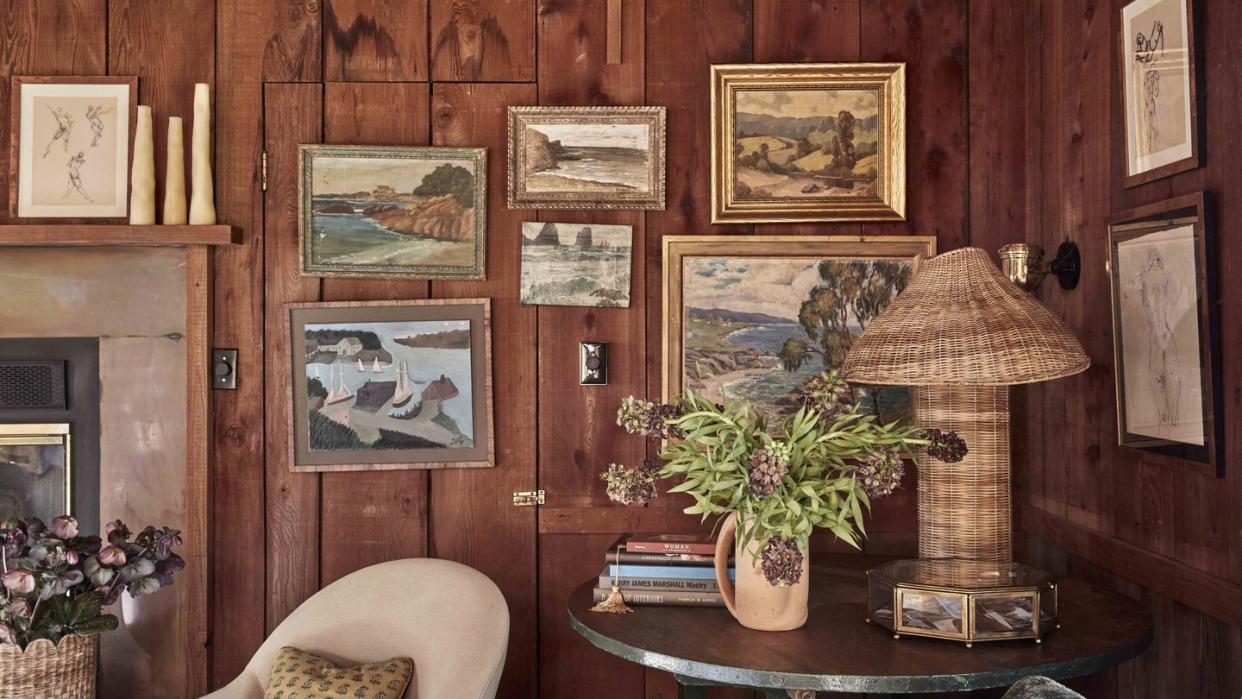
"Hearst Magazines and Yahoo may earn commission or revenue on some items through these links."
[table-of-contents] stripped
Wood paneling probably brings to mind 1970s family dens or—worse—1990s basements. But the warm-toned wallcovering is taking on a new life beyond rustic cabins and retro home videos. It has shed its reputation as a dated feature just waiting to be torn out and fully stepped into the 21st century as, dare we say it, chic. "People are getting tired of white, smooth everything," Emily Ward of the Los Angeles–based design duo Pierce & Ward says. A number of interior designers are reaching for the material again as a way to bring warmth, architectural interest, and character into both new build and restored historical homes.
"Just because something was 'trendy' for a certain period of time does not disqualify it from ultimately being timeless," Austin-based designer Shannon Eddings explains. "Wood paneling was overused at a certain point in time, but it remains a classic. Like any feature, you can always repaint or restain it to give it a fresh feel."
While traditionally crafted in natural wood, usually oak or pine, the 20th century saw the introduction of laminate and vinyl wood-look products that lowered the cost of the material significantly, making it widely accessible—and widely overused. Today, designers are going back to the element's roots (pun intended), using real wood and high-quality craftsmanship to ensure the feature ages beautifully. Roman Alonso of the Los Angeles–based firm Commune Design prefers to go a step further and use local wood as a nod to the home's environment. "It is an added plus when you can go local and use native woods from the area. It allows you to bring the outdoors in."
Types of Wood Paneling
Wood paneling can be a great way to embrace the history of your home when you choose a period-appropriate style, designer Britt Zunino of Studio DB in Manhattan says. "People are more interested in using historical architectural details and celebrating what was there originally," she adds. Below, we break down the different styles of wood paneling so you can choose the right one for your home's interiors.
Beadboard
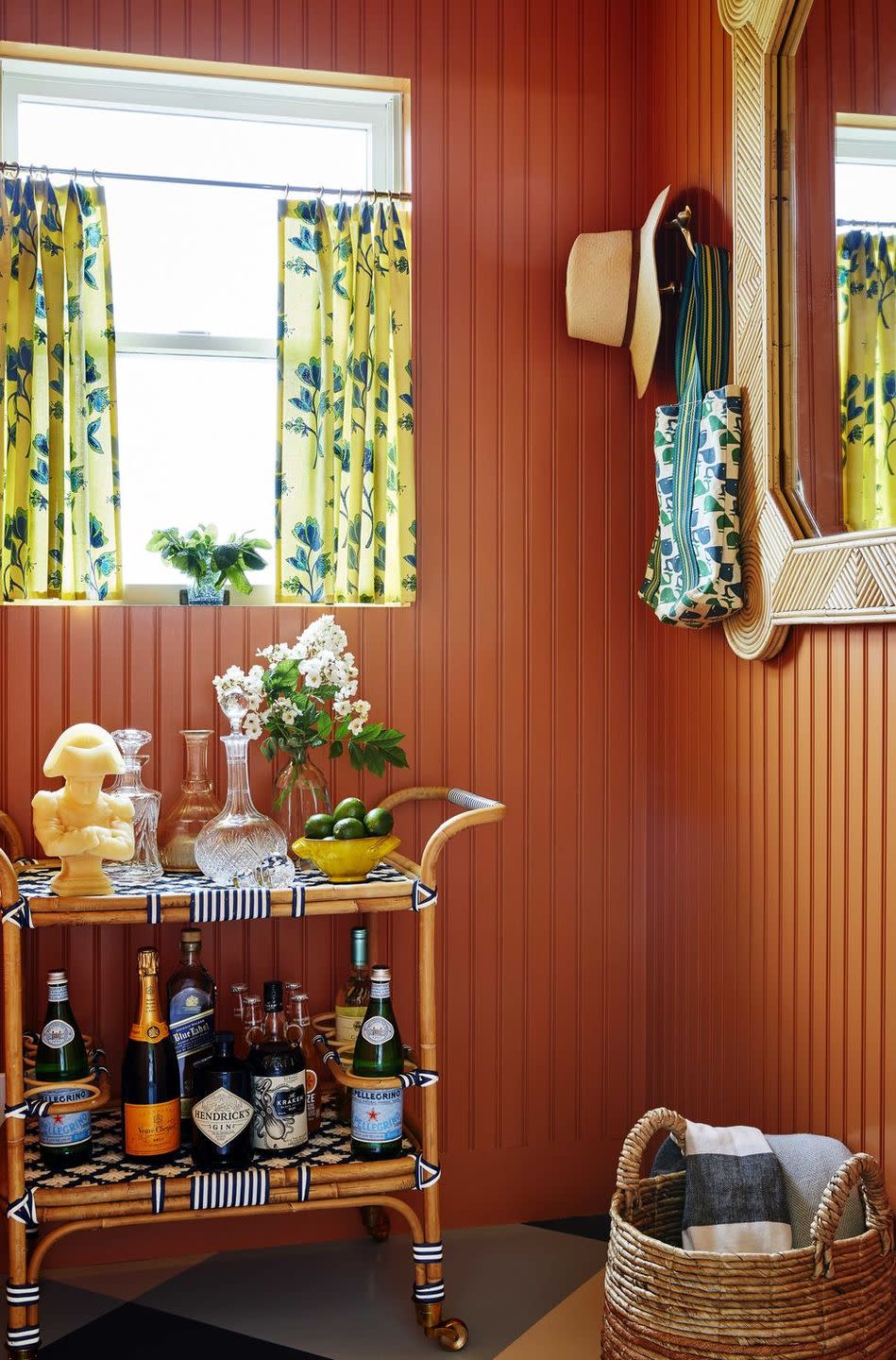
This type of wood paneling traditionally consists of boards with a beaded edge and a beveled edge. When they're fitted together, the beaded part stays visible, running the length of the joint and adding a decorative detail with a cottage-y vibe. Today, you can buy beadboard as a sheet, which is a much way to install it and get the same look.
V-Groove
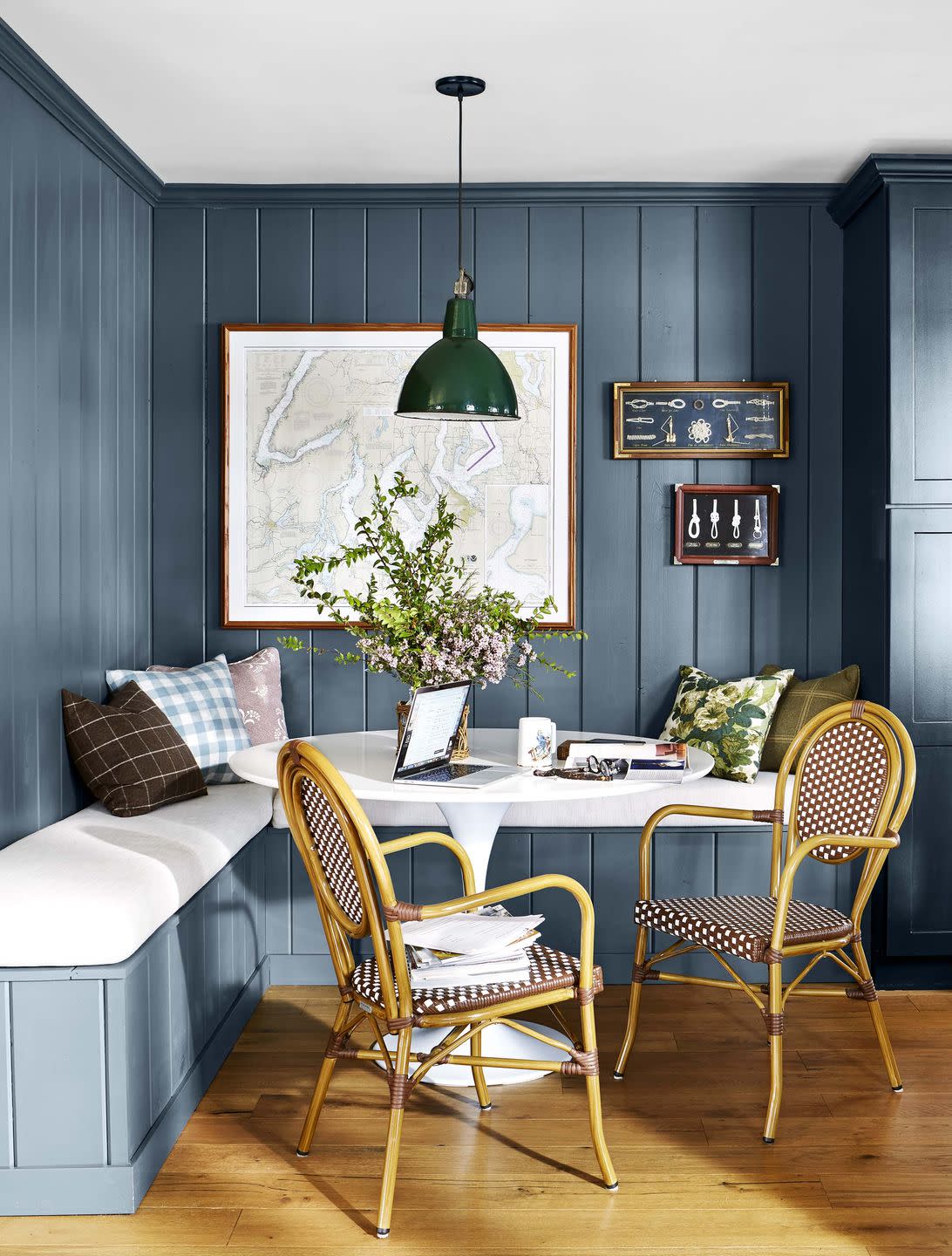
Boards of V-groove paneling traditionally had what's called a chamfered edge so that when they were fitted together a shallow v-shaped notch remained between them. Like beadboard, it's commonly available as sheets now, so there's no need to do the fitting yourself. Still a little confused about the difference between them? Where beadboard has raised, beaded lines that run its length, V-groove has inset, v-shaped lines. V-groove planks tend to be slightly wider than those of beadboard too. Also, V-groove is considered to be a bit more versatile, formal, and modern than beadboard.
Board-and-Batten
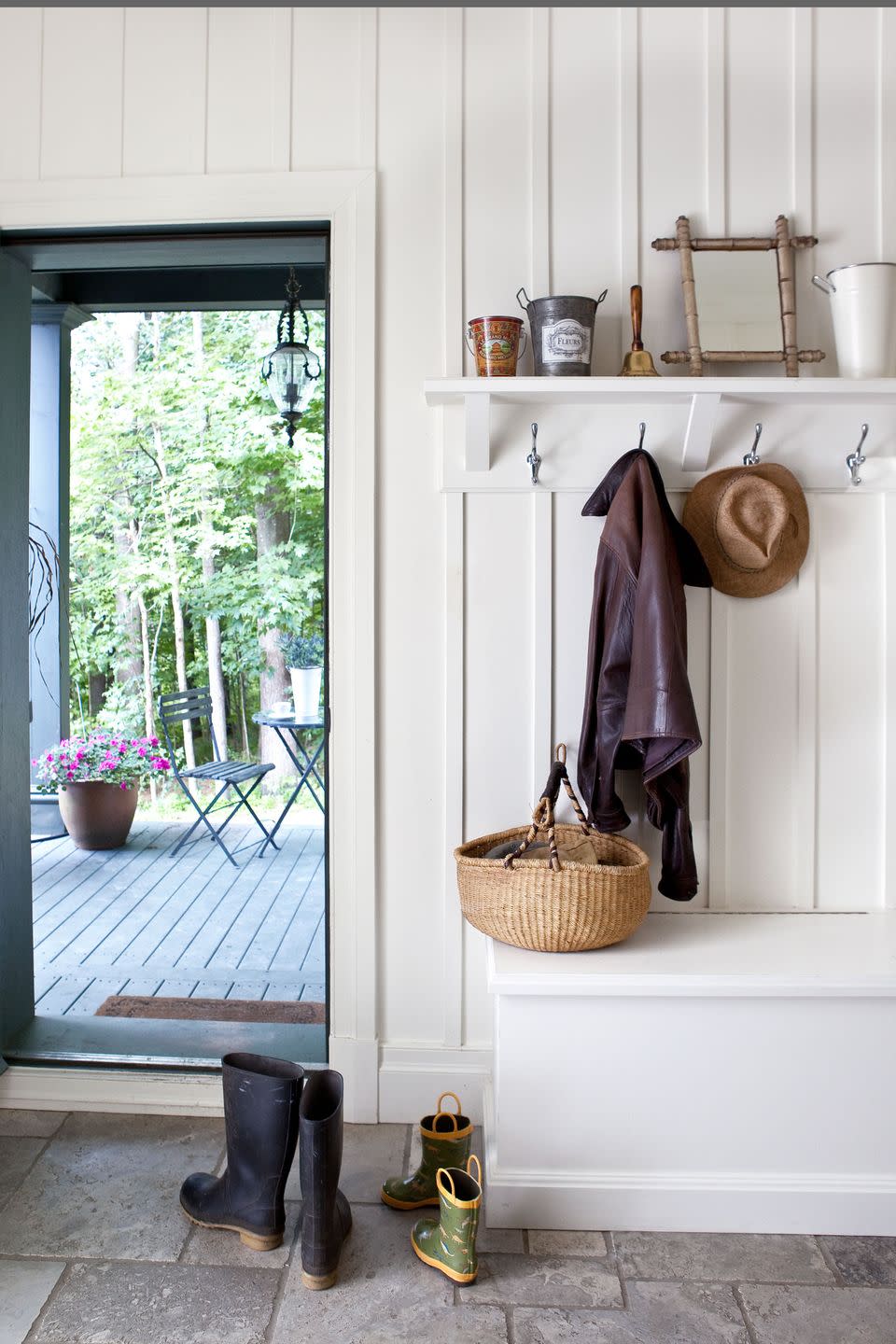
Board-and-batten paneling refers to a very specific look with a very specific installation process. Flat wood paneling is installed, then each seam is covered with a thin vertical strip of wood called a batten. Traditionally, this was to improve weatherproofing on the exterior of a house. These days, most board-and-batten paneling is made of vinyl or fiber cement board rather than real wood. It's popular in home interiors as well as on the exterior.
Wainscoting
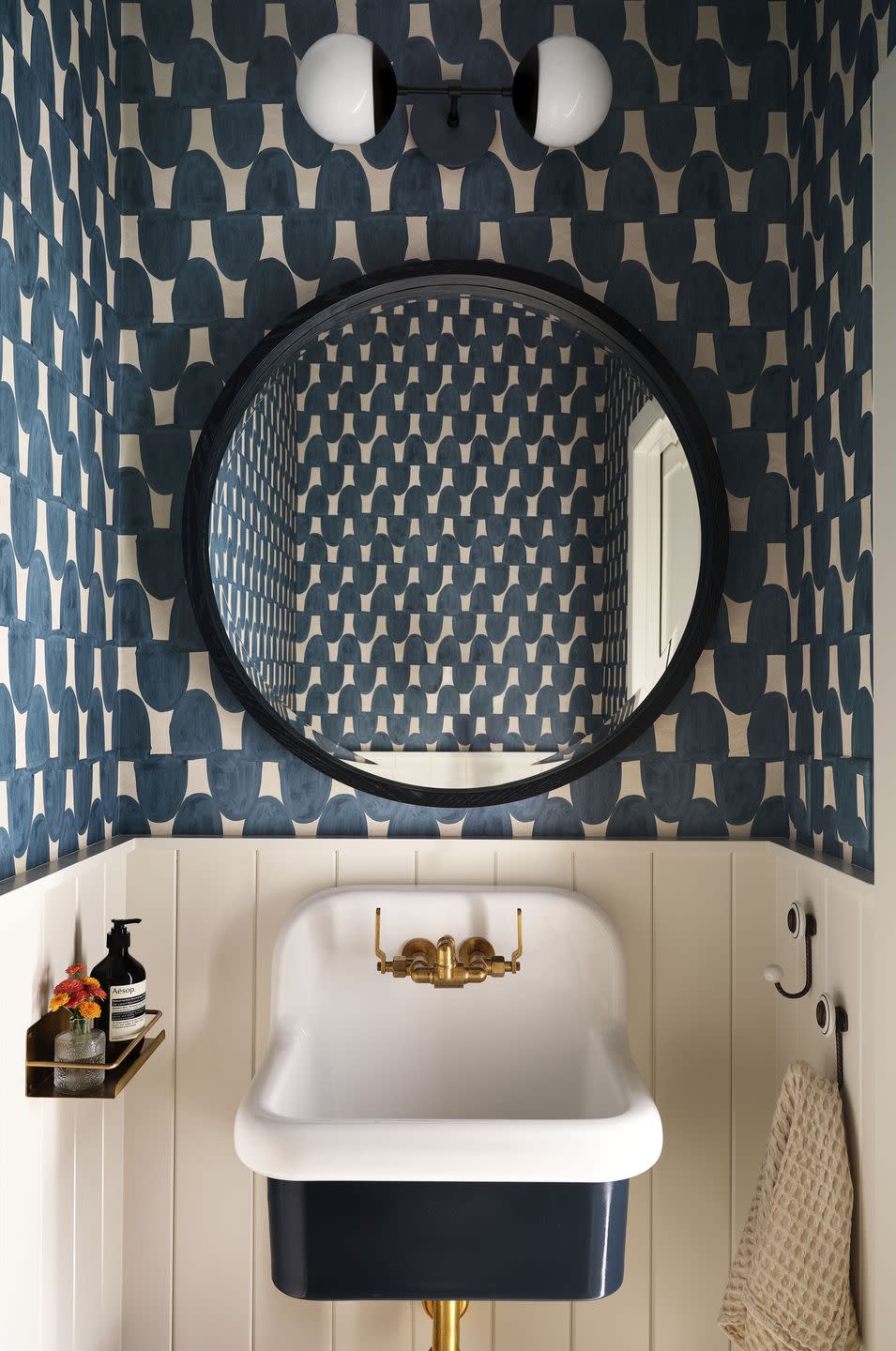
Wainscoting is a term that describes decorative wood paneling that typically covers the lower third of a wall and was originally intended to insulate and protect it from furniture scuffs. Wainscoting is more about where the wood is placed on the wall rather than the specific type of paneling used. Raised panel, V-groove, shiplap, and beadboard, among other paneling styles, can all be used as wainscoting.
Shiplap
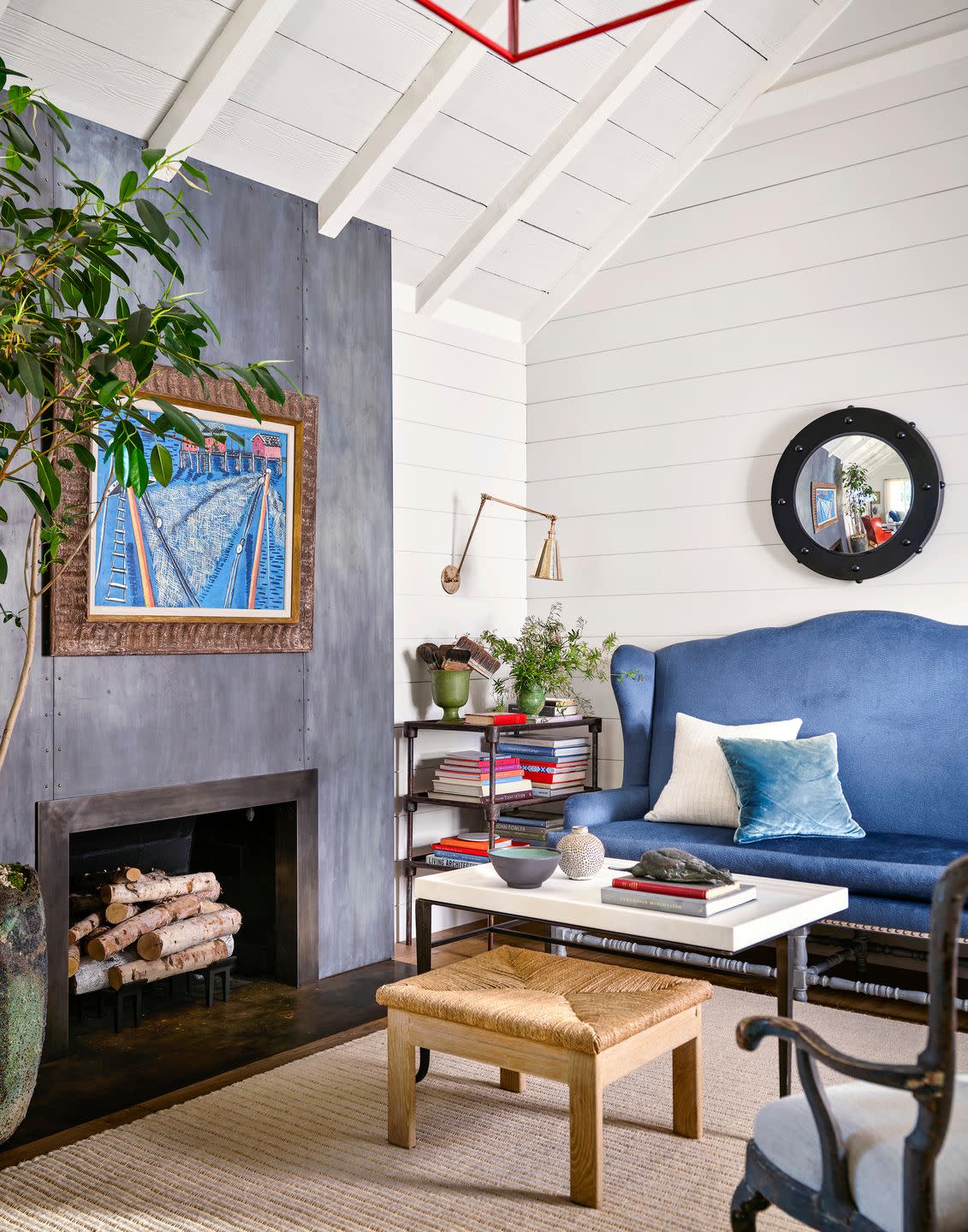
Shiplap is a material made of wooden planks, real or faux, that fit together at a 90-degree angle. Traditionally, shiplap boards ran horizontally and had a nickel gap (1/8 inch wide) between them, giving the paneling its distinct look. Shiplap was used in maritime applications to waterproof ships and keep them afloat. Nowadays, the wall treatment adds a nautical touch to interiors. Joanna Gaines of Fixer Upper fame is a big fan.
Flat Panel
As the name suggests, flat paneling is, well, flat. You'll see minimal to no grooves or decorative elements as flat paneling is traditionally flat strips of wood placed together to create a paneled effect.
Raised Panel

Raised panel wood paneling is used to create a grid effect on a wall or the lower third of a wall. The individual panels have framed insets with beveled edges. Kitchen cabinets commonly use this style. This style was very common in Victorian interiors.
Tongue and Groove
According to Mark's Lumber, "Tongue and groove paneling (often abbreviated as T&G) refers to a set of boards in which each board has both a tongue and a groove on opposing sides." The tongue, or deep ridge, fits into the other board's corresponding slot or groove.
How Much Does Wood Paneling Cost?
Adding wood paneling to walls costs between $1,000 and $15,000, according to data from Angi that's based on a 12-by-12 room. The price goes down or up depending on the panel materials you choose. Real wood is more expensive than faux wood-look vinyl or laminate paneling. MDF or plywood will be on the lower end of the price range for natural wood, while more exotic real woods could cost you upward of $40 per square foot.
These prices also don't include painting or staining the paneling—another necessary expense to factor in, unless you plan to do it yourself.
How to Make Wood Paneling Feel Modern
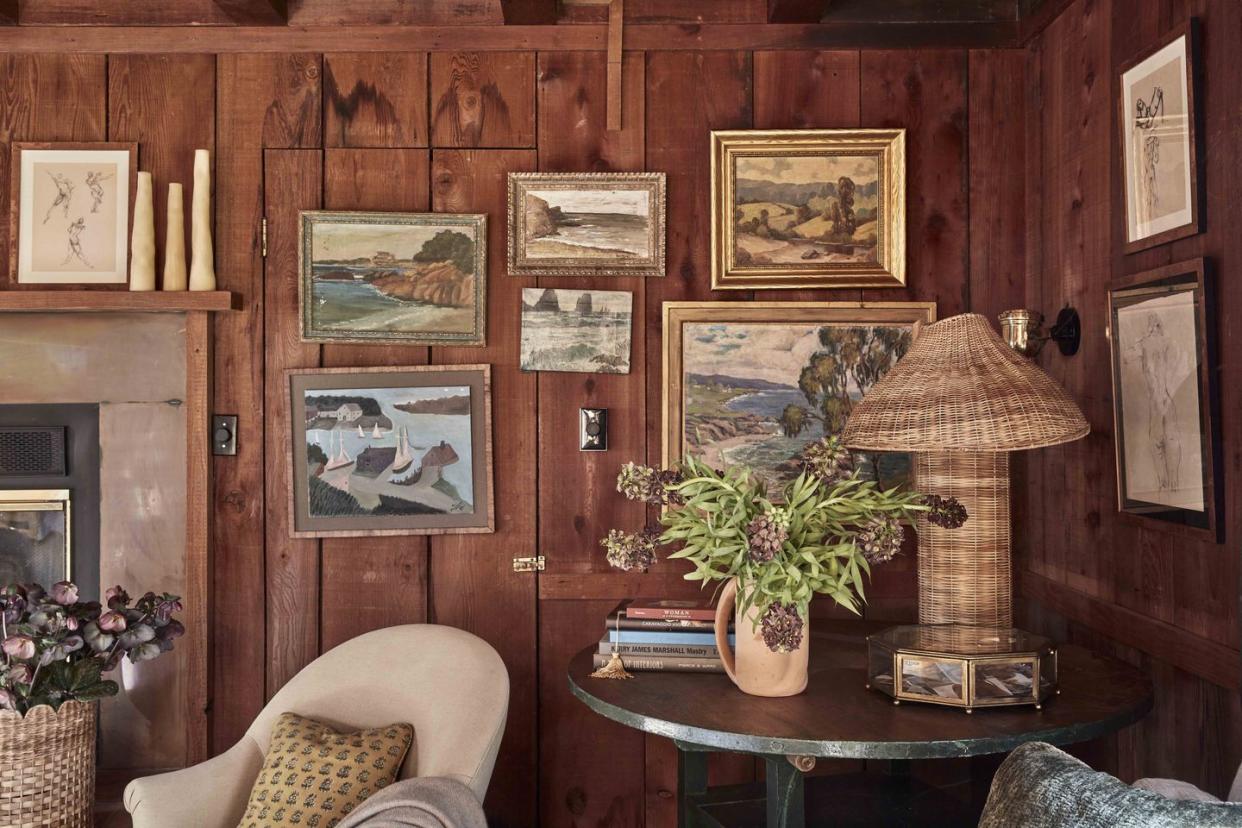
Despite the sense you might have that wood paneling emerged suddenly in the 1970s to cover every interior, the material actually dates back much further—all the way back to doorway details in the Greco-Roman architectural period, according to Encyclopedia Britannica. Using it is certainly a great way to embrace and highlight the historical architectural details in your home, but wood paneling can also feel incredibly modern. We asked three expert designers to explain how they like to use it now.
Mix and Match
The Pierce & Ward designers like to mix materials and finishes—they feel that this creates a more balanced look. "If you have to make it modern (and we don't think you have to!), you can always mix more modern materials (like metals) with it or pops of color that harmonize with the wood or use warm cream colors," says Louisa Pierce.
Choose the Right Style
For Eddings, the style of the paneling (tongue and groove vs. shiplap vs. beadboard) can really dictate the feel of the space and give it a traditional or modern direction. "I think a smaller paneling gives off a more classic or English cottage feel, while a wider tongue-and-groove can be more modern," Eddings says. "You can also direct the look through the use of paint colors. Certain paint colors go more traditional, while others lend themselves to being more modern (yellow vs. white, for example)."
Go for Glamour
To avoid the cabin vibes altogether, designer Elizabeth Pash recommends going straight for high-gloss paint—especially if you're looking to refresh existing paneling. "If the budget allows, you can do a high-gloss paint on a dated paneling," she says. "It gives it a completely new look and is a great way to add color and drama to a room."
Wood Paneling FAQ
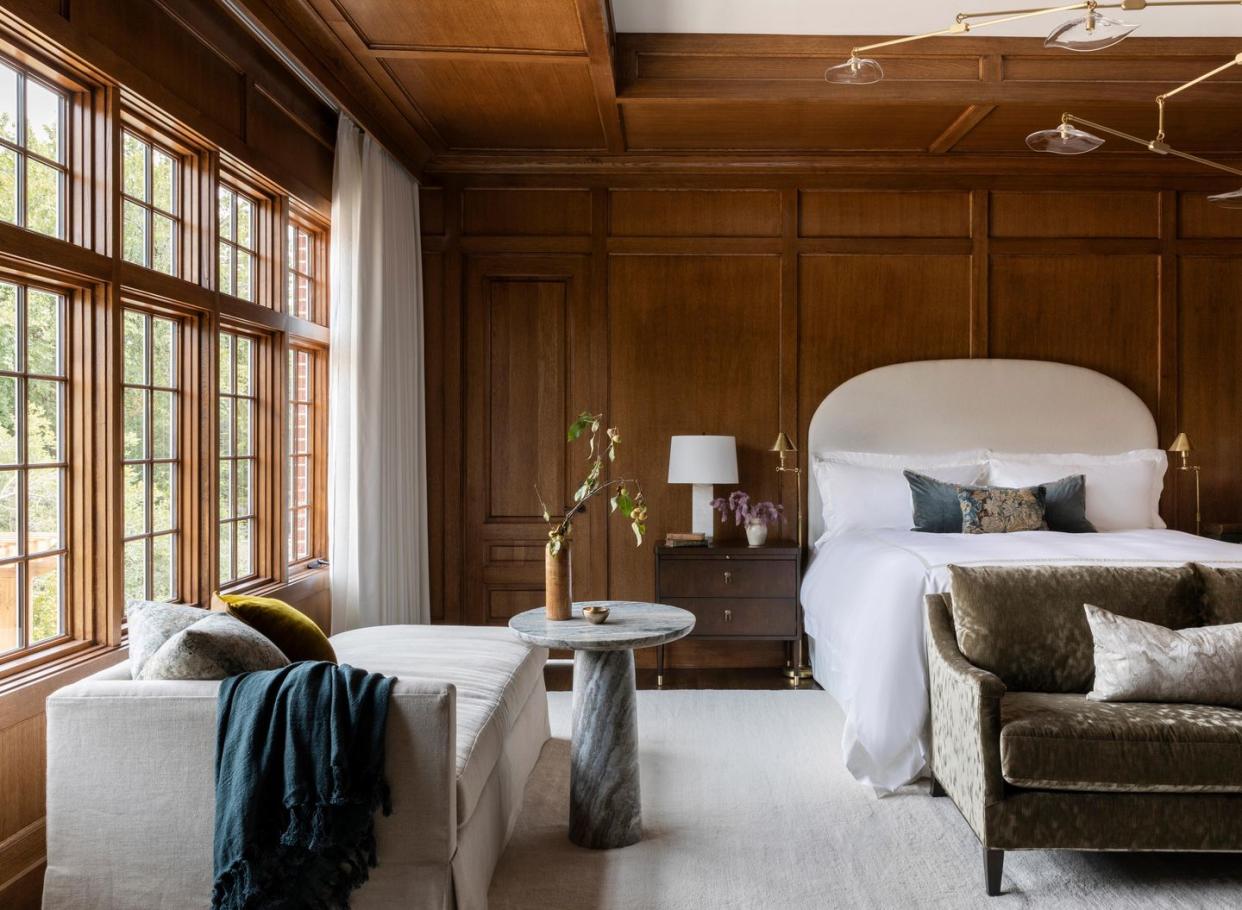
Can You Buy Wood Paneling in Sheets?
Yes, if installing individual wood panels one by one sounds daunting, you can purchase sheets of wood paneling from your local hardware store (options may be limited) or a specialty retailer. Sheets are usually easier to install and more cost effective.
Is Wood Paneling Noise Canceling?
Wood paneling isn't specifically for dulling or dampening noise, it can help reduce noise because it's an added layer on top of the drywall and insulation. Wood paneling is not completely noise canceling or acoustically sound.
Is Wood Paneling Cheaper Than Drywall?
No, wood paneling, whether real wood or faux laminate, is more expensive than standard drywall alone. In most cases, wood paneling is installed on top of drywall, so you need to budget for both materials.
Working on a design project? Let us help!
Follow House Beautiful on Instagram and TikTok.
You Might Also Like
